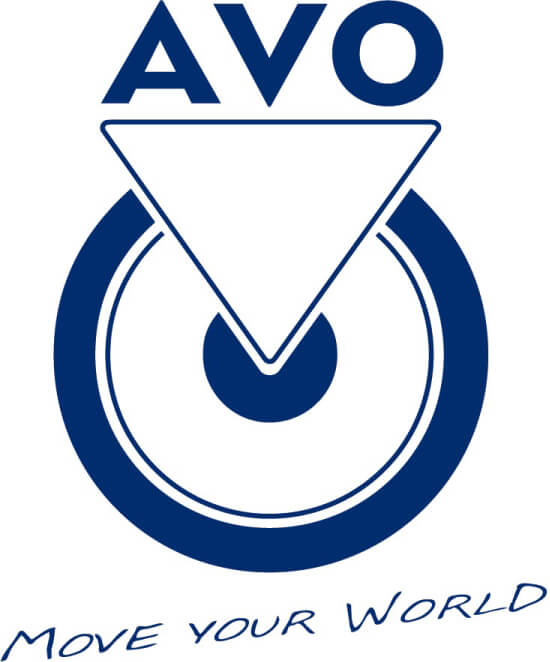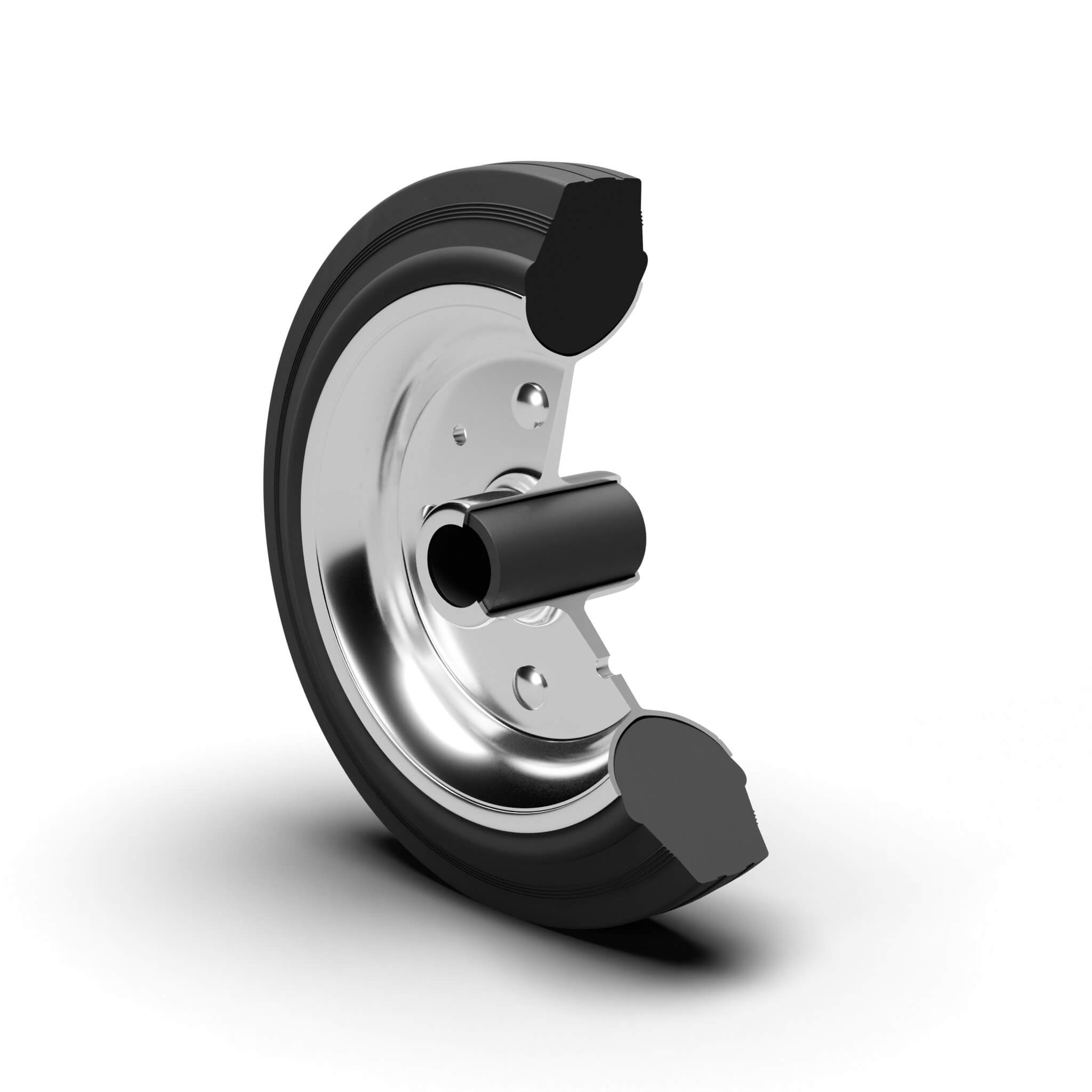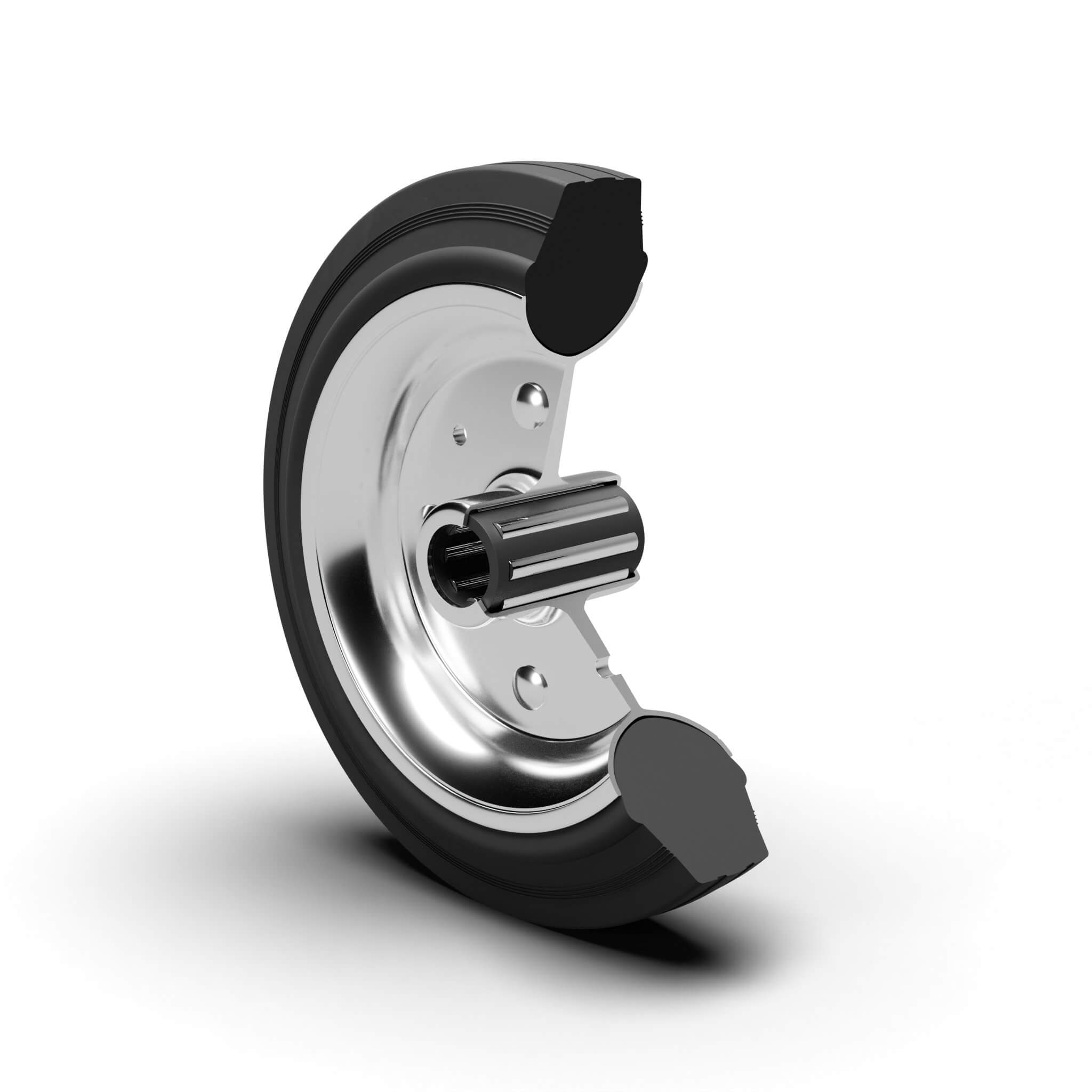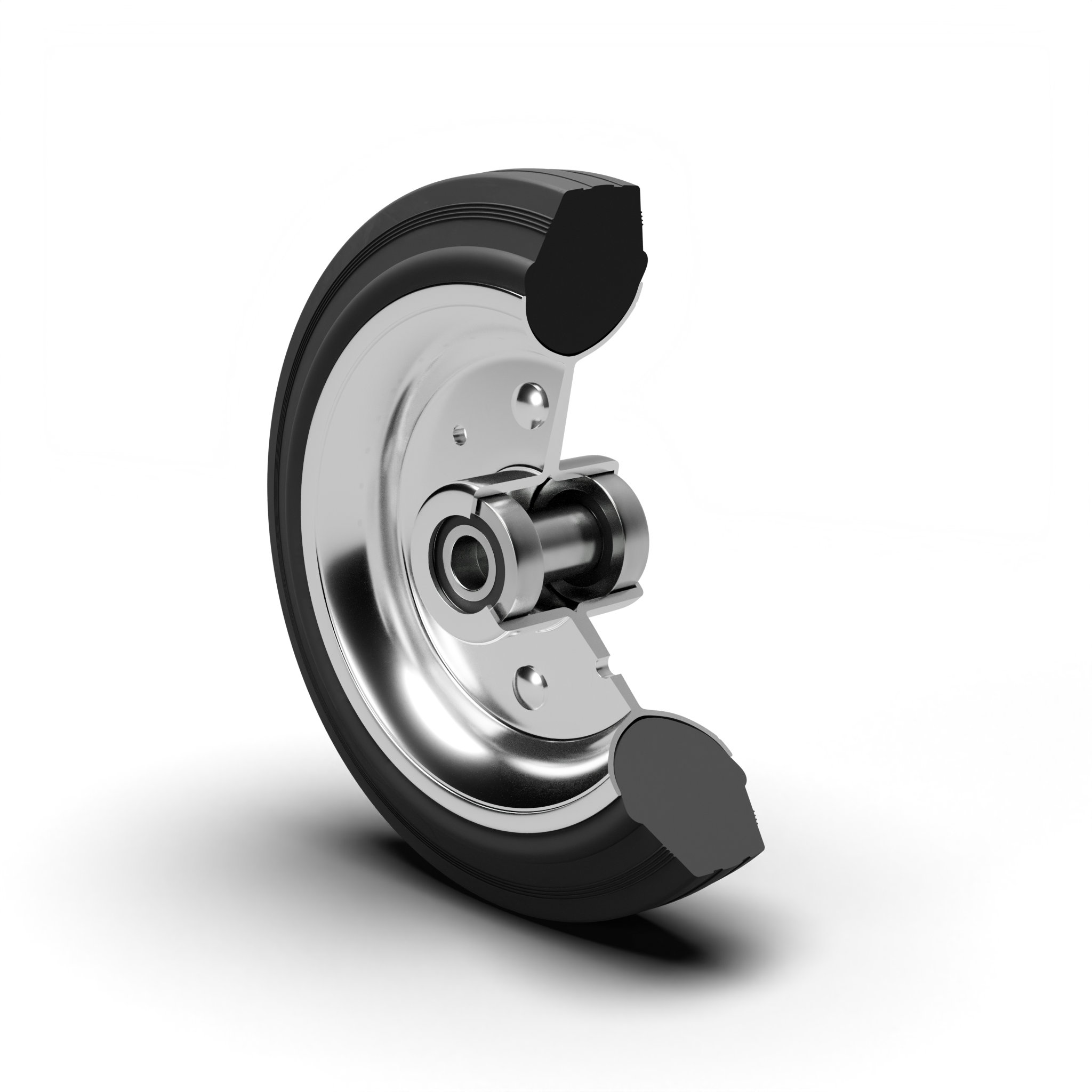rotation systems
Rotation systems
Rotation systems vary according to performance and load capacity: nylon bushings are cost-effective and durable, suitable for low speeds; roller cages reduce friction and allow heavy loads to be moved; ball bearings ensure maximum smoothness, durability and reliability even at high speeds.
Self-lubricating nylon bushing
The simplest rolling element is the bushing: economical and robust, it is used for institutional casters and for trolleys with low travel speed and limited use.
The application of bushings depends on the materials used for Wheels and hubs; when these are made of polyamide, polypropylene or cast iron, such rolling elements are not employed, as these materials already offer good rolling properties. Among the most suitable substances for the production of bushings is nylon, particularly effective with rubber Wheels and sheet-steel housings.
Bushings generally do not require maintenance unless under specific operating conditions (for example, high dust concentration in the air). They are also resistant to corrosion.
Roller bearings
Thanks to its practicality and strength, the roller cage is frequently used in trolley brackets. Its compact shape makes it suitable for applications where space is limited. Roller cages usually require no maintenance, since they are lubricated with long-life grease during assembly.
The structure of the roller cage, also available in stainless steel, consists of a plastic or metal cage housing cylindrical steel rollers that rotate between the axle tube and the Wheel hub. The rolling motion of this structure generates rolling friction instead of sliding friction, reducing the effort needed to move the Wheel and making it possible to transport very heavy loads.
Ball bearings
When high running smoothness is required, even at elevated speeds, and resistance to heavy loads in any environmental condition, the most commonly used rolling element is the single-row ball bearing (or precision ball bearing). The rolling elements are hardened balls, inserted into a dedicated cage and running between two rings, one outer and one inner. A protective shield (non-contact seal, type Z) is added against dust ingress.
Depending on requirements, one or two additional sealing rings (non-contact seals, types RS or 2RS) can be fitted.
Ball bearings are also available in stainless steel; both versions require no particular maintenance, since they are lubricated with long-life grease during assembly. Another type of rolling element is the conical ball bearing. Mainly used in institutional casters, it employs balls housed in a cage running between conical bearing races; the entire structure is hardened and, as in the other cases, lubricated during assembly.
For further technical details or to request tailored advice:



